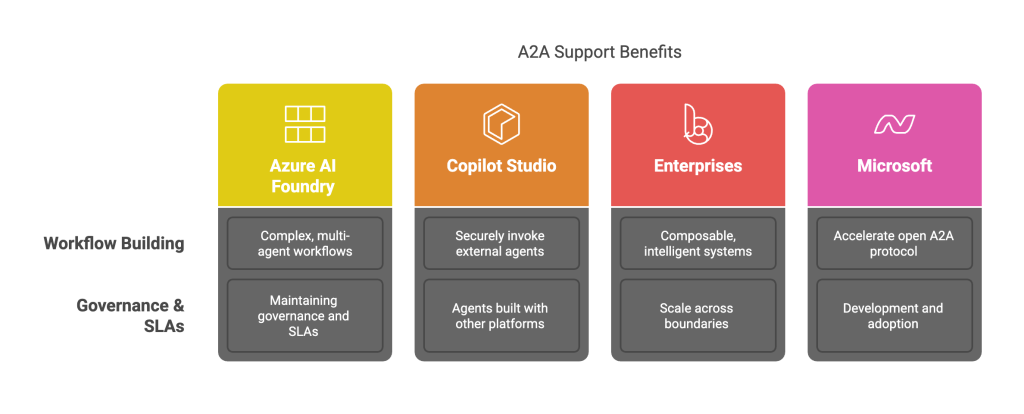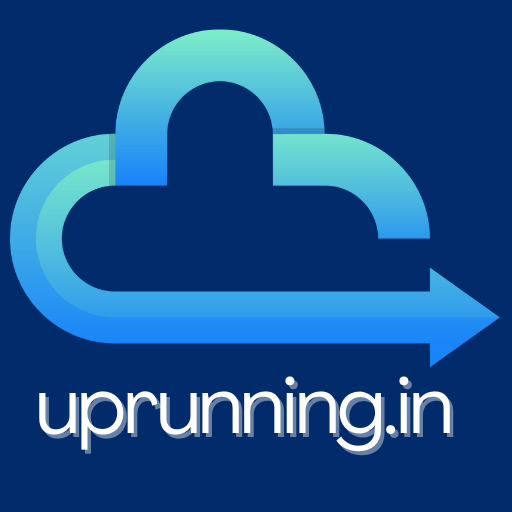The future of AI isn’t just about humans interacting with machines — it’s also about machines communicating with each other intelligently and securely. Microsoft’s recent release of A2A (AI to AI) marks a transformative milestone that enables intelligent agents, models, and AI systems to talk to one another — securely, contextually, and with governance baked in.
And when combined with the power of Azure AI Foundry, this changes the game for enterprise-grade AI deployments.

🔍 What is Microsoft A2A?
A2A (AI to AI) is Microsoft’s vision and infrastructure for inter-agent communication — enabling multiple AI systems or agents to collaborate across organizational boundaries. These communications are:
- Policy-aware
- Context-rich
- Traceable
- Secure by design
Just like APIs transformed system-to-system integration, A2A is about model-to-model collaboration.
🤖 How A2A Fits into Azure AI Foundry
Azure AI Foundry — Microsoft’s powerful platform for building, managing, and deploying enterprise-ready AI — now has deeper A2A support. Here’s how it enhances key Foundry features:
| Azure AI Foundry Capability | With A2A Enabled |
|---|---|
| 🔗 Agents Playground | Agents can now interact with external LLMs or decision systems securely via A2A bridges |
| 🧠 Prompt Flow | Prompt chains can fetch responses from external models mid-flow |
| 📈 Model Catalog | Registered models from different teams can now “talk” to each other to perform composite tasks |
| 🏥 Healthcare Playground | Sensitive data remains isolated while AI agents collaborate securely for diagnostics or triage |
| 🌐 Multimodal Playgrounds | Speech, Vision, and Language agents co-orchestrate complex tasks with shared goals |
🚀 Real-World Use Cases Powered by A2A in Foundry
🔧 Manufacturing Automation
- Anomaly detection agent detects a fault → Notifies a scheduling agent → Triggers a maintenance bot.
- No human handoffs. All A2A.
🏥 Healthcare Decision Support
- A chatbot agent talks to a medical summarization model → Then queries a dosage model for pediatric patients.
- All in real time, across agent boundaries.
📞 Call Center Co-Pilots
- Speech agent handles conversation → Escalates to a language model for sentiment analysis → Triggers an action agent for refunds or follow-ups.
🌐 Why A2A is a Game-Changer for the Industry
- Composable AI Ecosystems
A2A shifts AI design from monolithic to modular — enabling teams to build small, focused AI units that interoperate, like microservices in cloud-native architectures. - Cross-Model Collaboration
Enterprise teams often train isolated models. With A2A, they can now securely collaborate without compromising data ownership or compliance. - AI as Strategic Peers
A2A enables machine-to-machine strategic dialogue — not just task execution. Imagine procurement bots negotiating with vendor bots in a supply chain. That’s not sci-fi anymore. - Safety and Control
All A2A interactions in Azure AI Foundry are logged, policy-controlled, and observable — a key need for regulated industries like finance, defense, and healthcare.
🔮 What’s Next?
Microsoft A2A is still in its early days, but with its integration into Azure AI Foundry, the possibilities are immense:
- Enterprises can orchestrate fleets of AI agents with contextual awareness.
- Citizen developers can build AI workflows that interact autonomously across boundaries.
- Multimodal AI agents can co-reason, co-create, and co-decide.
As we step into an era of collaborative AI, A2A isn’t just a feature — it’s the foundation.
💡 Final Thoughts
Azure AI Foundry gave enterprises a unified, governed AI workspace. With Microsoft A2A now in the mix, we are looking at the rise of AI ecosystems that are dynamic, modular, and autonomous.
The future of AI isn’t just humans talking to AI — it’s AI talking to AI to better serve humans.
#AzureAI #MicrosoftA2A #AzureFoundry #AIAgents #NextGenAI #EnterpriseAI
![]()

Leave a Reply